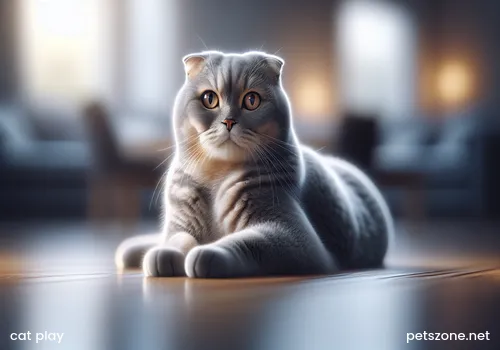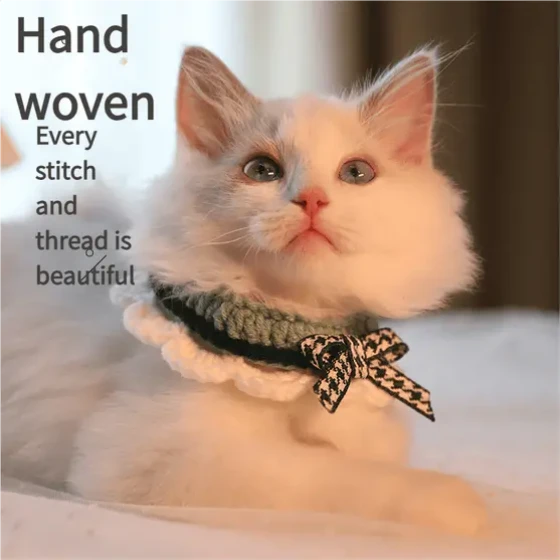The Difference Between Two Cats Playing and Fighting_How to Distinguish Cat Play from Real Fighting
Distinguishing whether cats are playing or really fighting depends on observing their body language, sounds, and reactions. Simply put, if two cats seem more like chasing and pouncing on each other with light, reciprocal movements and no painful or angry screams, they are likely playing; but if their fur is raised all over, they emit deep growls or screams, their movements are stiff and clearly aggressive, and one party is injured or continuously avoids the other, then it is a real fight.

Households with cats, especially multi-cat families, often witness scenes of cats "roughhousing". Sometimes they chase and frolic, appearing lively and fun; sometimes they hiss or even fight in a tangle, making it hard to tell if they are playing or seriously competing. Correctly distinguishing cat behavior is vital for maintaining household harmony and ensuring cat safety. Misjudgment might cause missing the best moment to prevent potential conflict or overly interfering with cats' normal social play.
Signs of Play: Cats’ "Friendly Match"
Playing is a way for cats to socialize, exercise, and expend energy. Like children playing "house" or "hide and seek", cat play has some typical features:
- Relaxed and flexible body language: Cats at play usually have relaxed bodies, smooth and elastic movements. They may arch their backs, leap sideways, or pounce and roll about, but the whole process looks "light" as if dancing. The tail might wag happily or twitch slightly, ears may point forward or slightly sideways but won’t be pressed tightly against the head indicating fear or aggression.
- Sounds mainly low purring or silent: During play, cats might emit soft purring sounds or hardly make any noise. Even when chasing or pouncing, loud hisses, screams, or threatening growls are rare. Occasionally, a "chattering" sound simulating hunting might occur, which shows excitement.
- Reciprocal movements simulating hunting: Play is usually mutual and turn-taking. One cat pounces; the other might counterattack, flee, or switch roles. They simulate hunting behaviors such as stalking, ambush, chasing, and "capturing" (gently biting or holding the other), but these actions usually control force. You will see them chasing each other, switching roles, or quickly separating after wrestling.
- Proper control of claws and teeth: Cats will usually retract claws while playing, and contact is just gentle patting with paw pads. Biting is symbolic and light without truly hurting the other. Their expressions reveal relaxed eyes and a slightly open mouth without showing aggressive fangs.
- Relatively short playtime with breaks: Play sessions don’t last long. After a few minutes, they may separate, groom themselves, or rest before possibly starting a new round. There are obvious intervals.
- Positive emotions after interaction: After playing, cats usually appear relaxed, may groom each other, or calmly lie together without any avoidance or fear. This shows they view the interaction as a positive social experience.
Danger Signals of Real Fighting: Escalating Conflict
Cats really fight mainly over territory, resources (food, toys, attention), or due to fear and insecurity. Real fights aren’t "fun" scenes:
- Stiff and hostile body language: Fighting cats become very stiff and puffed up, with fur standing on end (commonly called "piloerection"), especially on back and tail. Ears are pinned tightly backward, eyes wide open, pupils possibly dilated or constricted, and full of alertness and threat. The tail might whip quickly and forcefully or stand rigidly upright.
- Loud and threatening sounds: Fighting cats emit loud, continuous hissing sounds (like a "haahh"), low growls, and sharp screams. These sounds display clear anger, fear, or pain.
- Fast, forceful, and aggressive actions: Fighting moves are rapid, intense, and without restraint. They attack with claws and teeth trying to injure the opponent. You might see them tightly entangled, scratching and biting fiercely.
- Claws and teeth fully unleashed: In real fights, claws are fully extended causing scratches. Biting is forceful, possibly puncturing skin and causing bleeding wounds.
- Tense and intense fight usually ends with one fleeing or injured: Real fights aim to establish dominance or drive away intruders and are very tense. Usually, one side eventually flees or is subdued. Fights may cause injuries ranging from scratches and bite wounds to requiring veterinary care.
- Negative emotions after interaction, mutual avoidance: After real fights, cats typically avoid each other, keep distance, and may refuse close proximity for a long time. The injured cat may hide and lick wounds, while the victor remains alert or continues "patrolling" territory.
Summary of Key Points to Distinguish Play and Fighting
Sometimes, especially for young cats, play may look rougher with louder noises or stronger pouncing. This requires assessing all signs combined. If they separate quickly with no injuries and maintain positive emotions afterward, it’s mostly play. But if there is persistent, one-sided chasing or attack, or one party appears very fearful and resistant, it calls for caution.
When Should You Intervene?
After understanding the difference between cat play and fighting, it becomes clearer when to intervene.
- During play: Generally, no intervention is needed. Cats learn social boundaries and self-control through play. Unless you see one cat persistently bullied or play escalating toward real fighting, let them interact freely.
- During real fights: Immediate intervention is required! Cat fights may cause serious physical injury and psychological trauma, damaging their relationship.
How to safely intervene in a cat fight?
Remember, do not directly grab or pull apart fighting cats as you could get hurt. Try the following methods:
- Create a loud noise: Clap hands, stomp feet, drop a book on the floor, or loudly say "Hey!" Sudden noises may scare them into stopping immediately.
- Use obstacles: Throw a piece of clothing, a pillow, or place a cardboard box between them to separate.
- Spray water: Use a water gun or spray bottle to spray them; many cats dislike water and may separate.
- Offer distractions: Throw loud toys or treats nearby to divert their attention.
Once separated, isolate cats in different rooms to calm down. Don’t rush their reintroduction; give them enough time to settle. Later, gradually improve their relationship by letting them smell each other, feeding on opposite sides of a door, etc., so they slowly readjust.
Frequently Asked Questions
- Is it normal for cats to make sounds while playing?
Yes, cats may purr softly or make "chattering" sounds mimicking hunting while playing, which is normal. But continuous hissing, growling, or screaming likely means it isn’t just play. - My two cats always chase and bite each other. Is it play or fighting?
You need to consider body language, sounds, and post-interaction behavior. If motions are flexible, reciprocal, no injuries occur, and they remain calm afterward, it’s probably play. If movements are stiff, threatening sounds are issued, and they avoid each other after, it’s fighting. - How can I help my cats get along well?
Ensure each cat has adequate independent space, feeding and watering bowls, and litter boxes to reduce competition. Provide ample vertical space and hiding spots. Engage in regular interactive play to help expend energy. If tensions persist, consult a professional animal behaviorist.
In summary, distinguishing cat play from real fighting requires careful observation of their overall behavior. By understanding cats’ body language and sounds, we can better read their "little thoughts" and intervene timely to ensure our furry children live happily in a safe, harmonious environment.



